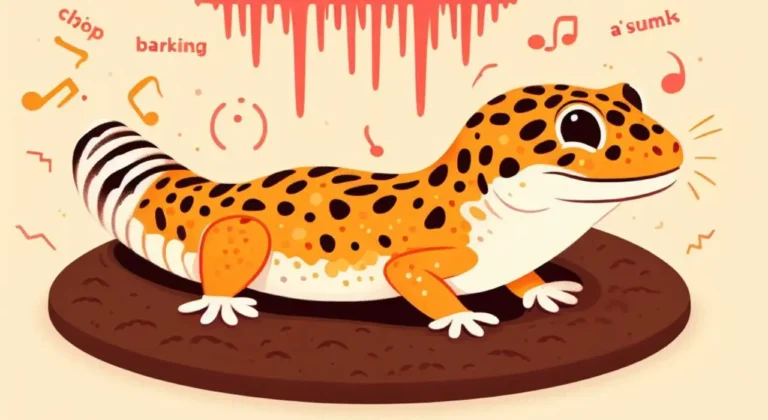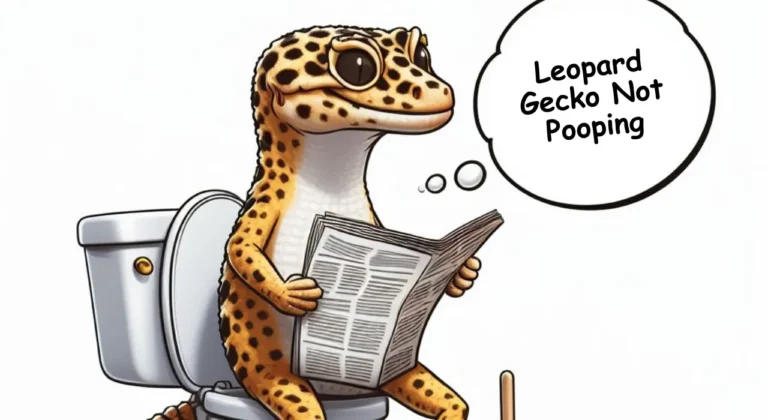Do Leopard Geckos Have Teeth? Things You Must Know
A newborn baby leopard gecko may seem toothless but they surely have small denticles that grow into small teeth when they age. But they interest you most because they change their teeth multiple times in their whole lifespan.
So yes, leopard geckos do have teeth, and not a few but almost 100. You can even see them just after they came out from the egg but at that time they’re just small conical-shaped denticles at their lower and upper jaws.
In this article, we’ll discuss all unheard facts about leopard gecko’s special conical-designed teeth. These will help you to know your gecko better.
Dentition in Leopard Geckos
If you don’t know what dentition is then it actually refers to the arrangement, number, and types of teeth in a living being. As we know leopard geckos are carnivorous which means their teeth play the most crucial role in their diet. The specialized shaped gecko teeth are constructed for their insectivorous (who feeds on insects) lifestyle.
They have almost 100 conical-shaped, pointed, and curved teeth that are arranged in rows along both their upper and lower jaws. These are suitable for gripping and holding onto small insects.
The one thing that makes their teeth different from mammals is that they don’t have molars or grinding teeth, as they prefer swallowing their prey whole.
An interesting fact that may amaze you is that their teeth continually get replaced throughout their lives, so they don’t lose their sharp dental structure and functionality. That’s why they’re called polyphyodonts. Let’s know more about it!
Teeth structure
As I’ve mentioned, a baby leopard gecko is born with almost a hundred teeth and we can characterize them in several key features. These teeth are called pleurodont teeth and are found in lizard-like species like your gecko. We can characterize them as tiny, conical, and pointed with a variable structure.
Here the jaw margin plays a vital role in tooth attachment as it’s composed of bones called maxilla, premaxilla, and dentary.
You’ll find The premaxilla bone situated at the tip of the upper jaw that supports 9 to 13 teeth in leopard geckos. While the upper jaw holds both maxillary and premaxilla bones. You may have noticed that leopards have more teeth along the upper jaw than lower jaws.
However, you can’t count the exact number of teeth as they change their teeth frequently from tooth loss and regeneration (but we won’t stop you if you love counting). About the dentary bone; they’re the only bone that is found in the lower jaw.
Pray consumption in Leopard geckos
The teeth play a vital role in eating for every living creature and the leopard geckos are from a lizard family, they exhibit some distinctive eating habits. Their specialized teeth structure helps them to consume their prey.
Leopard geckos are insectivorous and just like other insectivorous they also prefer to eat the invertebrates like worms, insects, spiders, snails, etc. and their special teeth play a pivotal role in facilitating this carnivorous lifestyle.
The leopard geckos simply seize and swallow their prey whole with the help of their conical and pointed teeth tips. The jaws grip and mobilize the insect and help the gecko to consume even slightly bigger-sized prey. The maxillary and premaxilla bones that are both situated on the upper jaw allow leopard geckos for effective hunting.
The leopard geckos usually follow nocturnal behavior (Which is an animal behavior where they are active during the night while sleeping during the day), which affects their feeding habits as they mostly hunt in the darkness. That means that the teeth of your dear geckos are finely tuned for capturing and consuming a variety of insects.
Leopard gecko’s teeth vs human teeth
There is no comparison between the human teeth and Leo’s teeth as they both are so much different. The denticles of a leopard gecko are around 100 in figure while the average human only possesses 32 teeth in his mouth. Also, the geckos’ teeth are pleurodont(small, conical, and pointy) while humans have heterodont( various types like incisors, canines, and molars).
The only similarity you’ll find is that the denticles of geckos and human teeth both are made from the same material. Humans need their teeth to chew their food while geckos directly swallow their prey.
Another difference you’ll notice is that human teeth are only replaced one time in early childhood and they stay forever. On the other hand, Leo’s teeth are replaced so frequently that an average leopard gecko grows a total of 4000 teeth in his whole life.
Health issues related to the teeth of leopard gecko
Geckos may need proper dental care if they suffer from health issues related to their teeth. The one issue that your gecko may suffer could be malocclusion which is improper truth alignment, which leads to difficulty in grasping and consuming their prey.
Another condition is the retained shed where your dear pet may face a condition where pieces of shed skin may accumulate around the teeth that affect the dental function.
Sometimes the geckos feel the pain and difficulty during eating that can occur due to injuries and infections.
Overgrown or fractured teeth may also pose challenges, affecting your Leo’s ability to feed.
If you see any signs of health-related issues in your gecko make sure to contact your local vet and ask for assistance.
Tips to take care of the teeth of leopard geckos
Now that it’s clear that your dear gecko has teeth and is also crucial for eating. So it’s really important to make sure that they work properly and grow properly each time. For that, you can use these tips to make it easier for the gecko:
1. Make sure it gets a proper diet
A proper diet is essential for every creature and for the geckos make sure they get a well balanced diet rich with calcium. As you know calcium is the core element that helps to grow the teeth. You can feed them crickets, mealworms, or waxworms as they’re gut-loaded insects.
You can also feed it calcium supplements to prevent calcium deficiency.
2. Maintain a comfortable environment
Not only for teeth, but creating a natural peaceful environment with the right temperature and humidity will promote the overall health of the leopard geckos.
Also, Make sure you conduct regular health checks, including the inspection of the mouth and teeth. Any sign of abnormality in your gecko should be carefully addressed by the vet.
3. Monitor the shedding of gecko
Helps to aware you so you can prevent the shedding around the teeth by providing humid hide during the process.
4. Promote the natural chewing in geckos
Encourage your leopard gecko for natural chewing behavior by introducing branches or accessories that promote dental health exercise and stimulation.
Conclusion
As we’ve confirmed to you the leopard geckos do have the teeth and not the 32 like humans but 100. We’ve also discussed some facts to know about their teeth and what health issues they may face because of them.
I believe that you may be providing your gecko with a nutritious, calcium rich diet and monitoring their health from time to time. A regular veterinarian checkup will do the work but it’s up to your gecko to get a comfortable and peaceful environment if you really wish for them to be always healthy.
By implementing the given tips including proper food and environment you can enhance the quality of the leopard gecko’s life.

